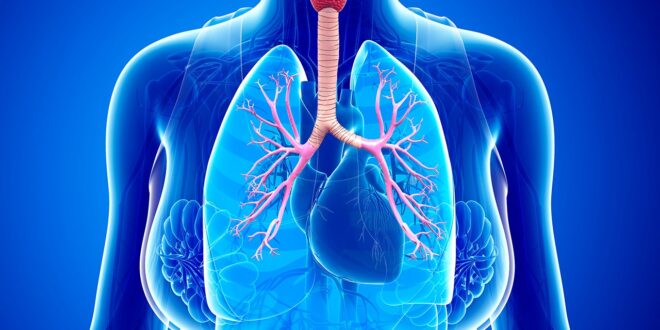Approximately 12% of the UK population have been diagnosed with asthma condition which is commonly expressed by symptoms like shortness of breath, wheezing and coughing. However, these symptoms might vary, depending on the specific types of asthma. Therefore to help you navigate between the types of asthma, the following Pharmica article explores those 7 different types of asthma as well as their triggers and symptoms.
Table of Contents
1. Extrinsic or Atopic Asthma

Also known as allergic asthma, this common type of asthma is usually allergy-induced and begins in the individual’s childhood. The key reason behind this condition is the body’s immune system response that releases antibodies to tackle the perceived threat from allergens that are inhaled or swallowed like:
- Pollen or Dust
- Pet Dander or Hair
- Fungi or Mould
In addition, about 4 out 5 individuals with asthma conditions usually also have linked conditions like eczema, hay fever or even severe food allergies. Dealing with Asthma is a very serious matter. You may have to belong to a tight lifestyle. Dust and cold environments should be avoided. The doctor prescribed medication to be continued and for a sudden attack needed some extra protection so read more.
2. Intrinsic or Nonatopic Asthma
Also know as non-allergic asthma, this type of asthma is not triggered by allergens unline Atopic/Extrinsic Asthma. Even though the symptoms of this type are usually nearly identical to allergic asthma, the triggers vary and are difficult to identify. As this condition usually occurs in later stages of life, the symptoms tend to be more serious, commonly triggered by:
- Weather Changes
- Stress
- Infection
- Exercise in some cases
3. Occupational Asthma

The usual triggers for this type of asthma are commonly found in the individual’s workplace. In order to identify your potential workplace trigger, you can keep track of your surroundings, especially if you take some time off work or change your workplace. It is known that over 250 substances and materials used in manufacturing can be a primary cause of asthma. These materials can include:
- Various Paints and Adhesives
- Fumes or Gas
- Dust particles from Wood
- Substances extracted from plants like rubber latex, wheat or cotton
- Specific metals like chromium or platinum
The duration and severity of this type of asthma heavily depend on the concentration of these materials in the air, as well as their nature. Some of the higher risk industries and roles include:
- Bakers and Millers
- Hairdressers
- Healthcare Workers
- Textile or Metal or Plastic Workers
- Chemical and Detergent Manufacturing Workers
4. Exercise-Induced Bronchoconstriction
Exercise-induced bronchoconstriction (or EIB) occurs in 9 out 10 individuals diagnosed with asthma due to them experiencing breathing difficulties during or after exercising. This asthma trigger depends heavily on the air quality and condition with factors such as the temperature of the air, the amount of pollen and other airborne particles as well as many other factors. In combination, these variables contribute to EIB, potentially causing an asthma attack.
The symptoms of this type of asthma include difficulty breathing and/or wheezing that may be experienced a couple of minutes after starting your exercise and could last up to 24 hours. However, even though exercise could be a primary trigger for your asthma, it is not a reason to avoid exercise that could potentially even worsen the condition of your asthma. It is important to build and maintain your lung resilience with exercise while ensuring that you have an emergency asthma treatment inhaler with you at all times.
5. Aspirin-Induced Asthma

Almost one out of 5 UK adults who are diagnosed with asthma condition are sensitive to aspirin and other non-steroidal anti-inflammatory drugs like naproxen or ibuprofen. There is a chance that consuming this medication could lead to a severe allergic and asthmatic reaction. Therefore, this medication might need to be avoided and substituted by alternative painkillers like paracetamol. It is important to ensure that other combined medications like cold or pain relief are suitable for your intake.
In addition to that, if you are diagnosed with having nasal polyps in addition to your asthma, the chance of you having aspirin sensitivity is increased to somewhere between 30% and 40%. The combination of all three conditions is known as the Samter’s Triad.
6. Nocturnal Asthma
Also know as nighttime asthma, this condition usually involves having and expressing bad asthma symptoms during the evening or nighttime. These symptoms are usually standard for individuals diagnosed with asthma, like wheezing, coughing and inflammation of the airways. This condition affects almost half of all asthma sufferers and the research about the key causes of this condition is inconclusive but closely associated with the following triggers:
- Acid Reflux
- Flu or Cold
- Dust or Mould or Pollen and other Allergens
- The Sleeping Position (like reclined position)
- Build-up of Mucus
- Change in Hormone Levels
The consequences and implications of having a nocturnal asthma condition can be quite severe. For example, the sleep disruptions caused by the cough can cause severe fatigue and lack of concentration throughout the day. For instance, this type of asthma was proved to negatively affect the mental performance of children as well as their ability to perform and function at school
7. Cough-Variant Asthma (or CVA)

The CVA type of asthma manifests itself as solely chronic cough where your airways are attempting to get rid of the particles and elements that cause the irritation. The key symptom is the cough which is usually dry and occurs on its own. However, this condition sometimes progresses into classic asthma if left untreated. Therefore individuals diagnosed with CVA have a higher risk of developing classic asthma as well as other conditions like narrowing of the bronchial tubes as well as pneumonia and lung failure. Therefore, this type of asthma needs special corticosteroid inhalation treatment.
In conclusion, no asthma is the same – every individual responds differently to various triggers, depending on the immune system response. Therefore, depending on the type of the asthma you are diagnosed with, it is very important to ensure that you are aware of your triggers as well as your surroundings. It is worth keeping a diary of your asthma attacks to try to establish the pattern to spot any potential triggers. Finally, always ensure that you have an emergency inhaler on you at all time for potential preventative measure in case of asthma attack.
 World Magazine 2024
World Magazine 2024






